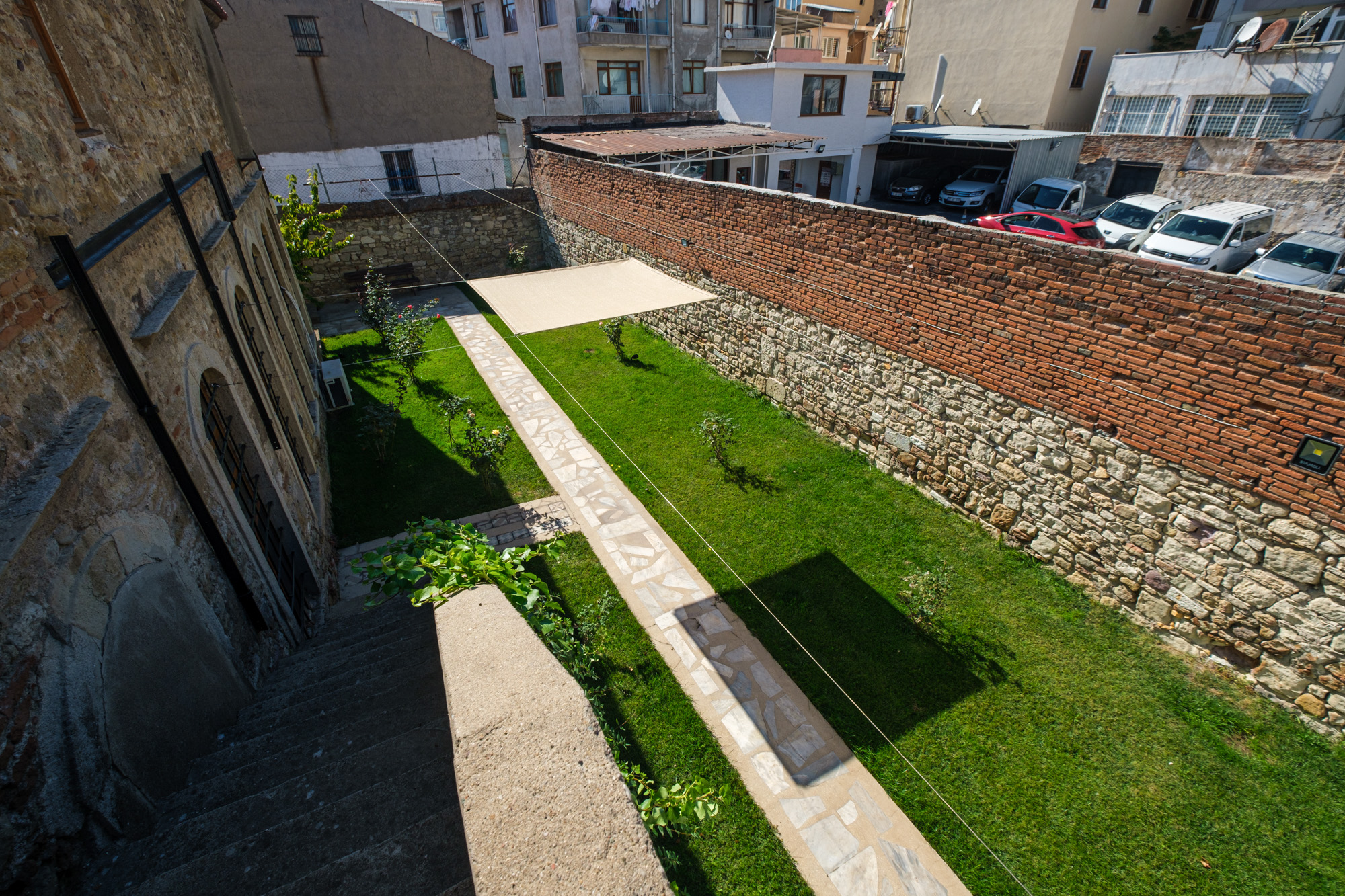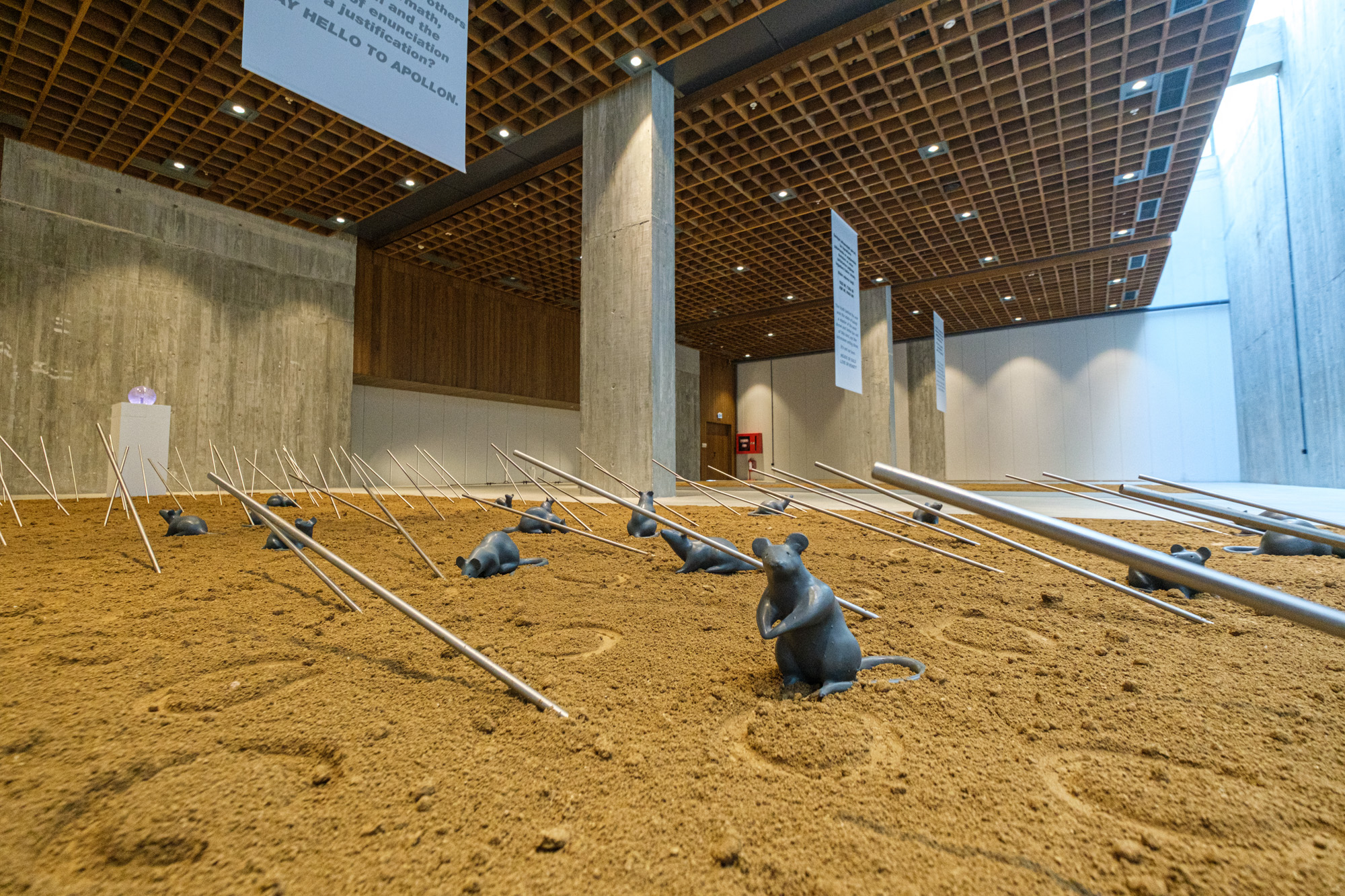Shows
Merging of Myth and Fact at the 8th Çanakkale Biennial


Çanakkale, the city on the southern shore of the Dardanelles Strait, overlooks the Thracian and Anatolian plains where ancient and modern soldiers waged the two most famous battles in Turkish and Greek history. Its vast, lowland horizon is defined by resident archaeologist Rüstem Aslan as the Homeric landscape. The mergence of myth and fact coexists amid memorials to the Battle of Gallipoli. Rich with unearthed bodies and buried legends, this ground served as the foundation for the 8th Çanakkale Biennial, titled “How do we work together.” Led by art director Arza Tüzünoğlu, the Biennial encompassed collaborations with six art initiatives, 11 different exhibitions, and over 40 artists. Although most of the contributors were Turkish, some were from neighboring countries such as multimedia artists Pravdoliub Ivanov from Bulgaria and Jasmina Cibic from Slovenia, engaging audiences with its regional focus.

A longstanding conceptualist from Turkey’s older generation of installation artists, Alparslan Baloğlu led avant-garde movements that ousted painting and sculpture from their traditionalist primacy. His works from the 1970s presaged the global art world’s taste for archival depth and site-specific abstraction. Situated at the main hall of the Troy Museum, his latest installation Horses, Gods and Others (2022) similarly spoke to the venue and evoked the visual themes of the Trojan War. The large-scale work comprises a number of rat sculptures, steel rods, as well as antique coins from a fictitious excavation, spread out over three rectangular beds of sand on the ground floor with imprints of horseshoes on it. Above the center of the installation, banners recalling the flags of an ancient procession feature capitalized phrases like “LOVE OR MONEY?” Altogether the work spotlighted the hidden agendas of financial gain and clandestine dethronement behind an otherwise grandiloquent mythology that continues to fire the hearts of nationalists and their cultural propagandists.
Elsewhere, the impetus to reconcile archival documentation with artistic invention ran through the Çanakkale Biennial. Başak Altin’s installation Hâfir (2022) at the Korfmann Library landed with critical site-specificity, merging the quotidian and epochal weight of objects and images with their historical interpretation. Programmed by the alternative pedagogical platform AVTOs, Hâfir is a sprawling gallery of found photographs in the veins of fictional archiving and media archeology, gleaned from Ankara’s antique bazaars. Based in the Turkish capital city Ankara—which like Çanakkale is also on the fringes of the Istanbul-centric art scene–Altin’s practice, which involves a steadfast commitment to forgotten ephemera, parallels the spirit of remote excavation, a knack for intuitive discovery. As part of her object-oriented research, Altin tracked an enigma of early modern Turkish culture, namely Hamit Zübeyir Koşay. Altin foregrounded images of Kosay as a Turkologist, whose archaeological studies attempted to prove the Turks’ prehistoric heritage in Anatolia and align the founding institutional ideology of the Republic of Turkey with its ethnic exclusivism. The early history of modern Turkey coincided with mass expulsions, particularly of Armenians and Greeks from the east and west respectively. Despite his anachronisms, Koşay published WHAT IS AN ARCHIVE? in 1936, inadvertently setting a precedent for contemporary art in Turkey. Altin’s installation, Hâfir, included a copy of the slim book, which essentially defined a roadmap for archival practices in Turkey’s early, secularized cultural sector, creating special links between archaeology and art.

The Çanakkale Biennial’s occupation of Mekor Hayim Synagogue shed an uncanny light on an occluded historiography, as the Jewish minority of Çanakkale and Turkey has almost faded. The sound artwork Courtyard Ornamentation with 4 Sounding Dots and a Shade, and a Synagogue (2022) by Cevdet Erek reverberated within the historic space. Erek adapted the Jewish ceremonial instrumentation of the ram's horn, or shofar, blown to mark the New Year of the Hebrew calendar. Based on ideas in Henri Lefebvre’s book Rhythmanalysis: Space, Time and Everyday Life (1992), Erek’s work with rhythm aspires toward architectural ornament and bodily equilibrium by intervening in site-specific acoustics. In the walled garden of the synagogue, the quickened pace of a shofar’s shrill tone filled the exterior emptiness of the Jewish temple, echoing the nostalgia of its lost, ancient community, while welcoming the naiveties of a curious and emerging art world.
The 8th Çanakkale Biennial was very much rooted in its national space, imbued with the soul of its local citizens in search of connections with others, be they people or ideas, that might otherwise be overshadowed by the myths and facts that dominate modern consciousness. Pursuing entries into the evidenced and imagined past, the artists, initiatives, and exhibitions of the Biennial responded to the present’s desperate need for broader community action.
The 8th Çanakkale Biennial was on view from October 1 to November 5, 2022.







